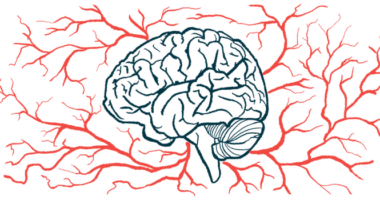After years of iron overload treatments, finally some good news
Through awful tastes, unfashionable devices, and more, I've now hit a milestone

It was a warm morning in Ocho Rios, Jamaica, early this year, and I’d just woken up. I rolled over, picked up my phone, and undertook my usual checks before proceeding with my day. While I was scrolling, my phone rang, and I recognized the number. It was my hospital in England.
I didn’t answer, but I sent a text back explaining that I’d traveled and asking if the telephone appointment — relating to my iron chelation treatment — could be rescheduled.
I proceeded with my day as normal.
Later, I received a text from the nurse. It was lengthy, but my eyes focused on one key sentence: “your bloods are excellent, stop the Exjade asap.” I could’ve screamed.
You see, Exjade (deferasirox) was the medication I was taking to manage my iron overload, a diagnosis I received eight years ago. This condition often comes when blood transfusions for sickle cell disease, which I have, are used as long-term therapy. I’d been through the wringer trying different treatment options to bring my iron levels down to normal.
I started with dissolvable Exjade tablets, which I had to mix into a drink — and they were horrible, tasting like chalk. The awfulness of that medication made compliance a challenge.
As a result of that poor compliance, my iron levels actually increased — not the preferred outcome. I then moved to a more aggressive form of iron chelation: disposable Desferal (deferoxamine mesylate) infusion pumps. I had to self-inject the medicine daily and walk around with the pump attached for 12 to 16 hours while it infused into my body.
I still remember the day I found out I needed that treatment. It upset me because I knew it meant walking around with a visible medical device at my side, something no young adult ever wants. It hurt my self-esteem, and I began withdrawing socially. I also began changing my fashion options to accommodate the device, which further damaged my self-esteem.
And since I’m highly squeamish, I didn’t like injecting myself, either, much less six days a week. It was one of the hardest things I’ve had to overcome.
The long road leads somewhere
That time was awful, and it lasted for years. After months on the treatment, however, I began to get used to it and learn to accept it.
As I grew in age and wisdom and the severity of iron overload dawned on me, I came to understand that it could cause a range of problems, including major organ damage and even sudden death. So I tried hard to be compliant. With that diligence, my iron levels slowly began to improve.
Once they were down to a more reasonable level, I was able to stop the daily infusions and move back to Exjade tablets. By this time, many years had passed since I first took the medicine, and the dissolvable, chalklike tablets were no longer the norm — for which I was eternally grateful. Instead, I took a standard tablet at the highest dose possible for my weight.
The move from the infusions to the current tablets was the first piece of good news about my iron overload I’d received in some time. I began to find hope again. And with that, I worked extremely hard to maintain 100% compliance with my regimen.
Writing about these experiences has taken only a few paragraphs, which seems underwhelming for what was a significant chunk of my life. I battled my overload with these three treatment options for almost a decade, and never was my life normal. As my iron levels increased, my energy decreased significantly, and I lost the ability to live life as I’d done before my iron woes.
I recently had MRI scans, which confirmed there was no remaining iron gathering around my heart and liver. This result, I was told this week, agreed with the blood-test results reported to me in January.
After a lengthy grind with those treatments and eventually maintaining 100% compliance to my medication regimen, and also moving from top-up blood transfusions to a blood exchange transfusion program (thanks to my port-a-cath), the excess iron in my body has finally come down to normal levels.
I’m no longer required to undertake any form of iron chelation treatment. The joy I feel cannot be contained. Living with a lifelong condition like sickle cell, when the only certainty is that the condition won’t disappear, I’ve found I rarely receive good medical news. I hope you understand why this shift makes me so happy.
Since I’ve spoken about iron overload in previous columns, I wanted to provide an update and share some good news. And in doing so, I hope I’ll encourage other sickle cell patients who might be dealing with iron overload by demonstrating that there can be light at the end of the tunnel.
Note: Sickle Cell Disease News is strictly a news and information website about the disease. It does not provide medical advice, diagnosis, or treatment. This content is not intended to be a substitute for professional medical advice, diagnosis, or treatment. Always seek the advice of your physician or other qualified health provider with any questions you may have regarding a medical condition. Never disregard professional medical advice or delay in seeking it because of something you have read on this website. The opinions expressed in this column are not those of Sickle Cell Disease News or its parent company, Bionews, and are intended to spark discussion about issues pertaining to sickle cell disease.








Leave a comment
Fill in the required fields to post. Your email address will not be published.